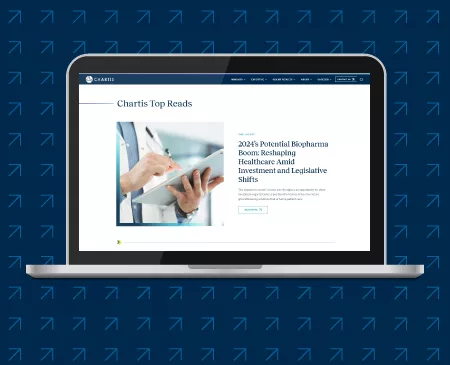The Buzz This Week
The National Alliance on Mental Illness (NAMI) and the Centers for Disease Control and Prevention (CDC) promote Suicide Prevention Awareness Month every September. The goals are to raise awareness around suicide and risk factors, disseminate important information regarding prevention, provide hope to those who may be struggling, and honor those whose lives were lost to suicide. An overarching objective is to destigmatize the topic and help people feel more comfortable talking about it and seeking help if necessary.
The suicide rate in the United States increased by more than 20% between 2018 and 2022, though rates vary among different groups. For example, nearly 80% of those who die by suicide are male, though more women attempt suicide. In 2021, over one-quarter of LGBTQ high school students reported attempting suicide over the previous year, more than 5 times the rate compared to their heterosexual peers. The age-adjusted suicide rate among non-Hispanic American Indians/Alaskan Natives is 61% higher than that of the group with the second-highest rate, non-Hispanic Whites. Military veterans have a higher suicide rate than nonveterans, as well as a higher substance abuse rate, which is associated with suicide. Life transitions—including moving from high school to college, retirement, and moving from inpatient to outpatient psychiatric care—can increase the risk of suicide.
Suicide is the second leading cause of death for youth ages 10-14. As we mentioned in a previous edition of Top Reads, the child mental health crisis has escalated over the past few years, in part due to the impact of the pandemic on family, school, and daily routines. Emergency Department visits for mental health issues by youths age 10-24 have dramatically increased in recent years, including suspected suicide attempts.
The CDC frames risk factors in 4 categories:
- Individual risk factors, including depression, history of other mental illness, criminal or legal problems, job issues or financial struggles, adverse childhood experiences (ACEs) such as violence or sexual abuse, and substance abuse. It should be noted that overdoses are often accidental, but not always. In recent years there has been an uptick in intentional overdoses as a suicide attempt for people aged 15-24, people aged 75-84, and Black Hispanic women.
- Relationship risk factors, including being bullied, family history of suicide, violent relationships, loss of relationships, and social isolation.
- Community risk factors, including lack of access to healthcare, community violence, stress of acculturation, historical trauma, and discrimination.
- Societal risk factors, including stigma associated with mental illness and “help-seeking,” easy access to lethal means of suicide, and irresponsible media portrayals of suicide.
Beyond the direct loss of life, suicide has far-reaching impact. Studies have found that those experiencing the loss of a friend or family member to suicide may experience long-term pain and suffering, such as grief, depression, anxiety, post traumatic stress disorder (PTSD), and higher risk of suicide ideation (envisioning suicide without an attempt) as well as suicide attempts. State-level per capita costs for suicide range from $624 (the District of Columbia) to more than $3,000 (Alaska), totaling more than $460 billion in 2019, the most recent year for which the data was analyzed.
Why It Matters
Fortunately, suicide is preventable with the right protective factors, resources, and support systems. Unfortunately, a meta-analysis published in April 2023 found that 50% to 60% of people with suicidal ideation or attempts do not discuss them with anyone, leaving them at great risk. It is incredibly important to promote suicide awareness, reduce stigma, and proactively talk about suicide so those at risk may be more apt to seek help and support. Psychiatrists are taught to ask patients if they are feeling suicidal or have plans to end their life as part of a psychiatric assessment. But many patients are not in specialty psychiatric settings before a suicide attempt. However, a study published in the Journal of General Internal Medicine found that most people do see a primary care physician in the months before suicide death. Therefore, incorporating suicide screening and prevention into the primary care setting could help identify more people at risk and provide access to important resources.
In a previous edition of Top Reads, we explored the concept of integrated primary care—a model that leverages a team-based approach with access on-site, via telephone, or via video consult to a behavioral health specialist as part of the care team. This approach ensures that comprehensive behavioral health screenings are included in visits and referrals are made to psychiatrists for further clinical care when it is needed. Incorporating more in-depth screening into annual physicals, including tools to assess suicide risk, could be modeled similarly as an extension of more cursory behavioral health screenings.
Kaiser Permanente Washington in the Pacific Northwest piloted the integration of behavioral health and suicide screenings into the primary care setting in 2015, subsequently rolling it out to all 25 clinics. The program paired external practice coaches with local implementation teams, including physicians, nurse practitioners, psychiatric consultants, medical assistants, and clinical social workers who were trained as integrated behavioral health clinicians. Decision-support tools were embedded in the electronic health record (EHR) that prompted screening, follow-up assessments, and care.
Data was recorded and performance monitoring was put into place. Initial results found that of nearly 51,000 visits when a behavioral health screening was due, the Patient Healthcare Questionnaire-2 (PHQ-2, a mental health screening tool) was completed for 89%. In addition, a full Patient Heath Questionnaire-9 (PHQ-9, a more in-depth screening tool) was completed for 96% of visits when indicated by PHQ-2 results.
As described in a profile in Psychiatric Times, 6% of this program’s PHQ-9 screenings indicated “frequent suicidal ideation (in the last 2 weeks). Of those with suicidal ideation, the Columbia Suicide Severity Rating Scale (C-SSRS) was completed for 86% of visits, and 37% of C-SSRS scores prompted a crisis response plan. These preliminary data illustrate the potential reach of BHI, which translated into a need for crisis response planning in 24 per 10,000 screening visits.”
The main barrier to behavioral health integration in the early days of this program was the fear expressed by primary care providers of identifying behavioral health or suicidal ideation in patients without adequate time, resources, or expertise to address the issues. The team-based approach, in-depth training on all screening tools, and incorporation into the EHR gave these providers the reassurance and tools they needed to successfully identify behavioral health challenges and/or suicide risk. The program was very well received by both providers and patients.
It should be noted that behavioral health integration with primary care isn’t necessary to conduct any of the screenings mentioned, but there is hesitation among many primary care physicians about including the screenings (particularly the more complex versions) if the behavioral health support, resources, and expertise is not available should the screenings indicate someone is at high risk, as was discovered in the Kaiser pilot. Unfortunately, fewer than half of primary care practices have any kind of formal connection with a behavioral health provider, and there is a severe undersupply of these providers across the country to exacerbate the barrier to integration.
Other approaches suggested by the CDC to reduce suicide rates include making stable housing available in economically depressed areas, training “gatekeepers” (e.g., school teachers and administrators, community center workers, and clergy), and instilling community-based policies and programs that will help reduce substance use, which is often associated with higher suicide risk. Through the National Suicide Hotline Designation Act of 2020, the 988 suicide emergency hotline was rolled out in the summer of 2022. While this is an easy-to-remember number to help those in crisis, there remain questions around hesitation to use the line due to resulting law enforcement involvement to check on a person and potential involuntary detainment in a psychiatric facility, as well as challenges for emergency departments to adequately staff psychiatric specialists to handle the increase in suicidal patients directed there after a 988 call.
Studies have shown that stigma over depression and other types of mental and behavioral challenges has dropped in recent years. Hopefully, with increased awareness and some of the aforementioned approaches becoming more widespread, the stigma around talking about suicide will also be reduced, and more people at risk and in crisis will be helped.
Per the National Institute of Mental Health: If you are thinking about harming yourself or attempting suicide, tell someone who can help right away:
- Call 911 for emergency services.
- Go to the nearest hospital emergency room.
- Call or text 988 to connect with the Suicide and Crisis Lifeline, which provides 24-hour, confidential support.
RELATED LINKS
CDC:
Suicide Prevention Resources for Action
The Guardian:
If We All Talked About Suicide, Wouldn’t That Be Better for Everyone?
Journal of General Internal Medicine: Health Care Contacts in the Year Before Suicide Death
Psychiatric Times: An Integrated Care Approach to Identifying and Treating the Suicidal Person in Primary Care
Editorial advisor: Roger Ray, MD, Chief Physician Executive.







